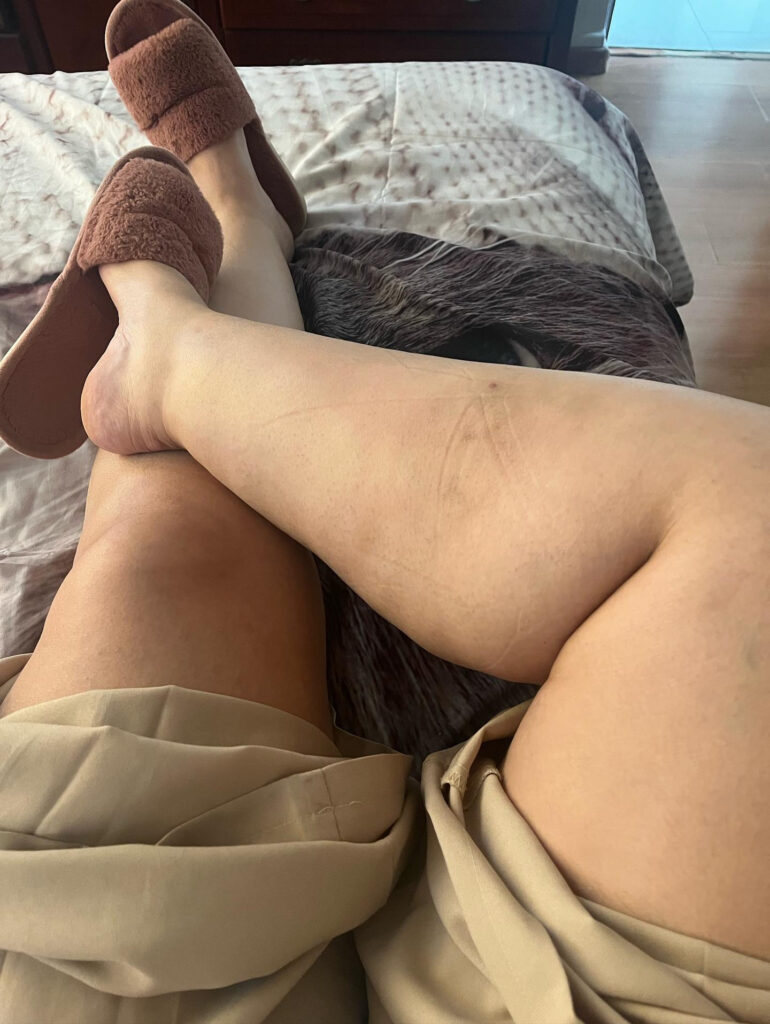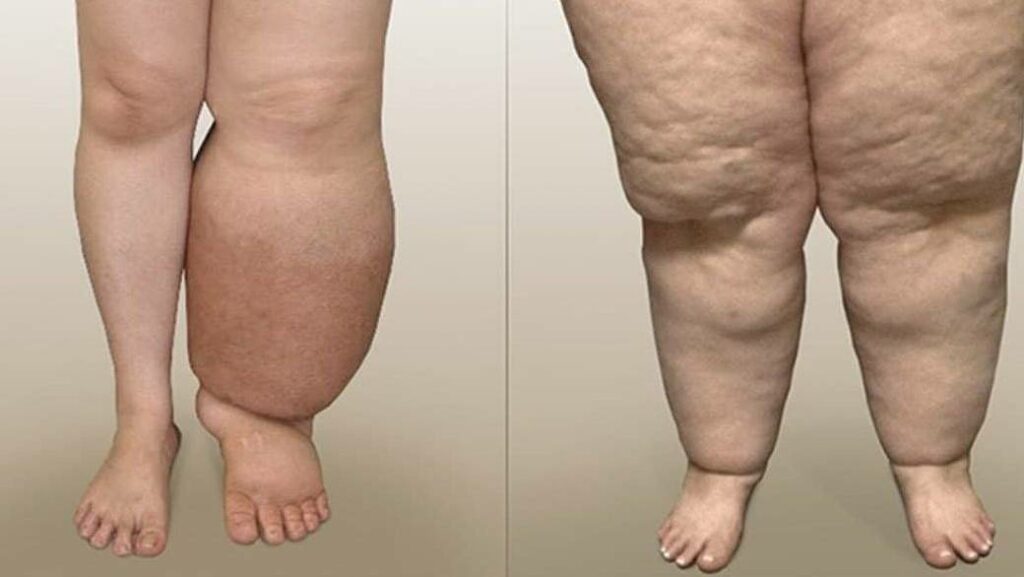Medically reviewed by Dr. Anuj Kr Purbey.
In a society where body image and weight management are paramount, distinguishing between a genuine medical condition and body variations can be challenging. This is particularly true for women struggling with abnormal leg size and shape, leading to the critical question: ‘Is it Lipedema or just fat legs?’ This blog delves into the distinction between Lipedema, a common but often under-diagnosed condition, and the accumulation of fat due to lifestyle factors or genetics.
What is Lipedema?
Lipedema is a chronic condition characterised by the abnormal accumulation of fat cells in the legs, and sometimes the arms, which often results in Lipedema symptoms such as pain, swelling, and mobility issues. Unlike regular fat, Lipedema fat is symmetrically distributed and does not improve with diet and exercise. It predominantly affects women and Lipedema is often mistaken for obesity or Lymphedema.
Key Differences Between Lipedema and Regular Fat Accumulation
- Symmetry and Distribution: Lipedema fat is typically symmetrical and affects both legs evenly, often extending from the hips to the ankles, sparing the feet, which creates a ‘cuff’ effect around the ankles. In contrast, general fat accumulation may not follow a specific pattern and can be more evenly distributed across the body.
- Pain and Tenderness: One of the hallmark symptoms is Lipedema pain or tenderness in the affected areas. The legs may feel tender to the touch, bruise easily, and be more sensitive compared to normal fat accumulation.
- Diet and Exercise Resistance: Lipedema fat does not respond well to diet and exercise, meaning that individuals with the condition can lose weight from other parts of their body without seeing much change in the affected areas. Conversely, regular fat is typically responsive to lifestyle changes.
- Texture: The texture of Lipedema fat can differ from regular fat; it may feel soft, doughy and have a dimpled appearance or, in advanced stages, hard and nodular due to fibrosis.
- Progression: Lipedema can progress over time if not properly managed, potentially leading to Lymphedema (a condition known as Lipo-Lymphedema), where excess fluid accumulates in the tissues. General fat accumulation does not follow this progression.
Diagnosing Lipedema
Due to the similarities between Lipedema and other conditions like Lymphedema, Lipedema is often under-diagnosed. Diagnosis typically involves a clinical examination by a Lipedema specialist who is knowledgeable about the condition. They may assess the distribution of fat, check for pain and tenderness, and consider the patient’s medical history. In some cases, imaging tests like Lymphoscintigraphy may be used to rule out Lymphedema. That’s why it’s vital to get a proper Lipedema diagnosis if you suspect you’re suffering from the condition.
Management and Treatment
While there is currently no cure for Lipedema, management strategies can significantly improve symptoms and quality of life. These may include:
- Manual Lymphatic Drainage: A specialised type of massage for Lipedema that helps encourage the drainage of lymph fluid.
- Compression Therapy: Wearing Lipedema compression garments can help reduce swelling and pain.
- Exercise: Low-impact exercises for Lipedema like swimming, cycling, and walking can improve circulation and lymphatic flow without exacerbating symptoms.
- Diet: While diet changes won’t cure the condition, eating a balanced, anti-inflammatory diet for Lipedema can help manage weight and reduce inflammation.
- Surgery: In some cases, liposuction – such as WAL Liposuction – may be recommended to remove Lipedema fat, although this is generally considered after other conservative treatments have been tried.
So, is it Lipedema or just fat legs?
Understanding whether you are suffering from Lipedema or simply fat legs is crucial for accessing appropriate care and treatment. Recognising the signs and symptoms of Lipedema and seeking evaluation from a healthcare provider familiar with the condition is the first step towards management.
If you’ve already been diagnosed with Lipedema, it’s important to remember that while the journey may be challenging, support and treatment options are available to manage symptoms and improve quality of life.
If you’ve exhausted all of the conservative measures mentioned above and are considering surgical intervention, check out our Lipedema surgeon directory.
Disclaimer: This article has been medically reviewed by Dr. Anuj Kr Purbey to ensure accuracy. However, it is provided for informational purposes only and should not replace in-person medical advice. Always consult your doctor or a qualified specialist for diagnosis and treatment.




Using herbal natural remedy was what got me tested negative to HSV 2 after being diagnosed for years. I have spent so much funds on medications like acyclovir (Zovirax), Famciclovir (Famvir), and Valacyclovir (Valtrex). But it was all a waste of time and my symptoms got worse. To me It is very bad what Big pharma are doing, why keep making humans suffer greatly just to get profits annually for medications that don’t work. I’m glad that herbal remedies are gaining so much awareness and many people are getting off medications and activating their entire body system with natural herbal remedies and they have become holistically healed totally. Quickly contact Dr Riaria herbal home now on his email. dr******@***il.com or WhatsApp him on:+234 701 0627-760
You can visit his website for more info: https://drriaria.wixsite.com/website
Hi, l have gone the massage way, bandaging at night and compression leggings and nothing has helped. I am68 years old and walking is sooo different and impossible at timed. Live in South Africa and looking to find information on liposuction on ankles and knees but don’t know where to start. Been to a lymph therapist but nothing helped. Please help me I just want to walk again.